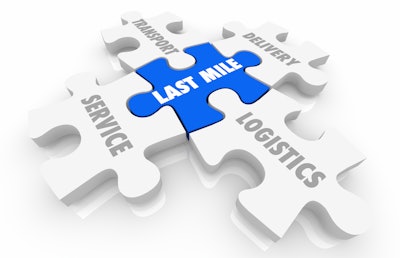
For grocery retailers, the pressure is on to meet consumers’ expectations for fast and efficient experiences regardless of curbside, delivery or in-store pickup. Whether shopping in-store or online, consumers also care deeply about food quality and freshness, speed of delivery and sustainability. According to Phononic's State of Online Grocery Shopping 2022 report, the majority (84%) of retailers see the need to provide this for their customers. As a result, grocers are increasingly turning to automation tools—and even robots—to meet consumer demand and support physical stores, distribution centers, and especially last-mile logistics.
Technology’s emerging role in last-mile logistics
Currently, fulfillment and delivery for grocery retail is extremely costly due to the challenges of keeping food at the correct temperature throughout the entire process. Food is moved from store or warehouse to delivery container/bag to delivery van before it finally reaches the customer’s doorstep. The process lacks visibility throughout each stage to ensure that food is kept at an optimal temperature, putting perishable foods at risk along with consumer confidence.
There needs to be better visibility into the handling and temperature control of delivery vehicles and boxes that transport the food. Introducing grocery fulfillment and delivery automation solutions can make the process more efficient, minimizing the opportunities for error. For example, grocers can leverage automation technologies to automate storage retrieval systems and points within micro-fulfillment centers through autonomous shuttles or robots at pick stations fulfilling orders to effectively streamline operations. Many of these robots and automation technologies are designed to work together with employees to make their tasks in the warehouse easier.
In addition, there have been great strides in the last mile delivery stage with the implementation of electric delivery vans. This market segment is expanding quickly, with some large retailers announcing deals with companies for vehicles ranging in size from small urban vans to large high-capacity units. These vans allow the last-mile process to be more sustainable and efficient. The vehicles can cover a considerable distance with a single charge, saving drivers time and money during the delivery process without needing as many fuel stops.
Navigating the challenges of cool and frozen food environments
The demand for online groceries continues to grow as it quickly becomes consumers’ preferred choice for shopping, increasing the need for automation across the entire grocery landscape—from store to door. In some scenarios, automation technology is beneficial and can prove effective in the long term. For example, when working in ambient temperatures, automation technology can significantly improve costs and order fulfillment time. But this is not the “end all be all” for automation in grocery fulfillment, because of the challenges of operating in frozen and cool environments. Robots and other automation technology need to be in a consistent temperature environment in order to operate properly, which raises concerns for putting this technology into the grocery fulfillment environment.
A solution to this problem is to use portable cooling and freezing totes with active cooling and connected services to monitor and control each order. Rather than cooling the entire warehouse, controlling the temperature of each tote or package makes for more cost-efficient fulfillment processes, while opening the door for automation to be used since the warehouse will be working in the correct range of these automated systems. The net result is providing efficient delivery of orders at the time and temperature you need, encapsulated in a sustainable package as part of the holistic cold chain ecosystem.
The future of grocery fulfillment will soon rely on advanced technology like robots and automation to help retailers stay profitable and meet demand. Retailers will continue to invest and test new technologies to see what works best to make their processes more efficient. Automation technology should not be seen as a “one-size-fits-all.”
As new technology develops, grocery retailers should take the time to analyze their supply chain and fulfillment processes in the cold chain to identify where automation can be used down the road. It is just the beginning of this technology’s implementation into the industry, so the better prepared and forward-thinking, the better equipped grocers will be down the road.




















